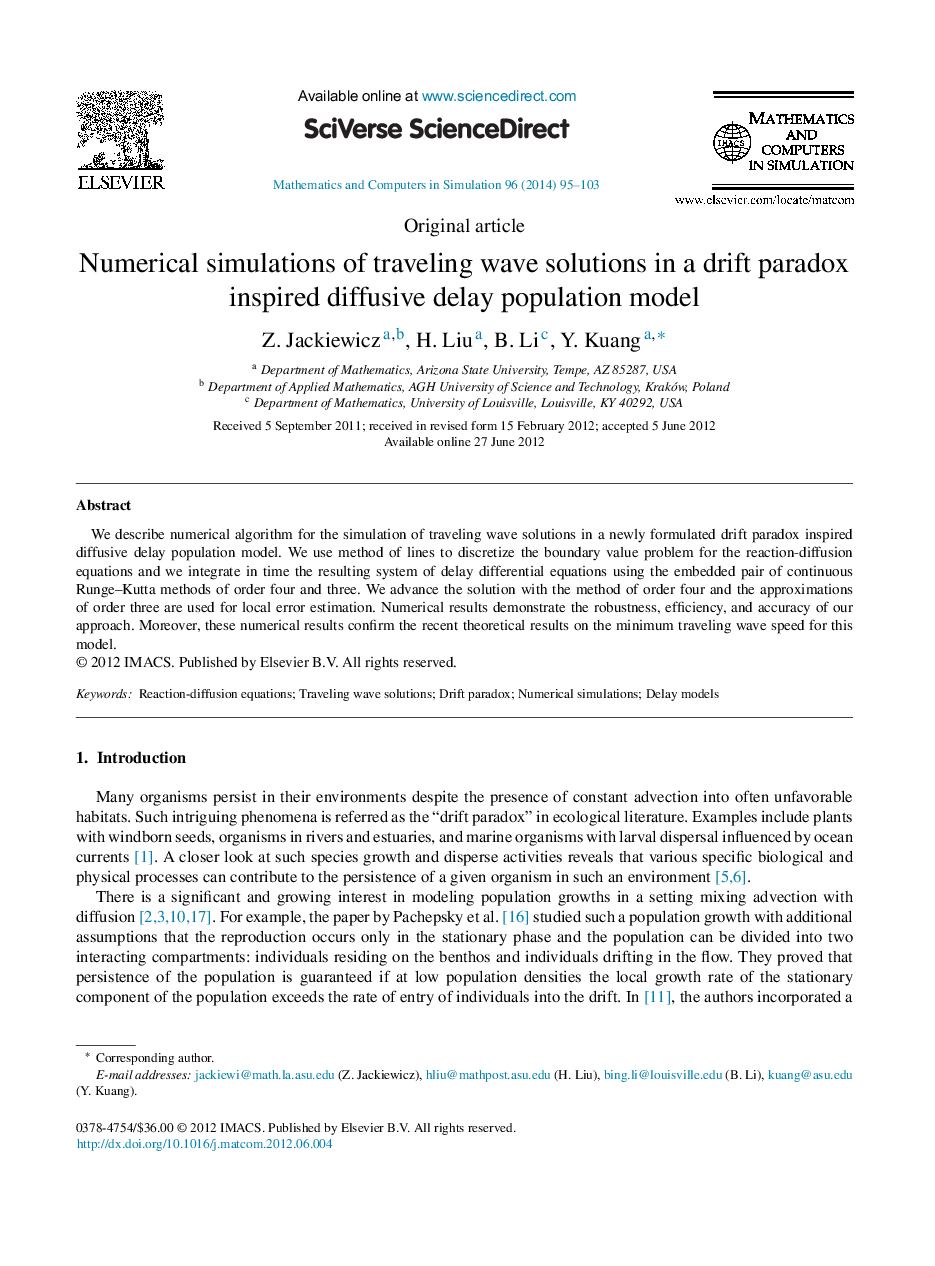| Article ID | Journal | Published Year | Pages | File Type |
|---|---|---|---|---|
| 1139341 | Mathematics and Computers in Simulation | 2014 | 9 Pages |
We describe numerical algorithm for the simulation of traveling wave solutions in a newly formulated drift paradox inspired diffusive delay population model. We use method of lines to discretize the boundary value problem for the reaction-diffusion equations and we integrate in time the resulting system of delay differential equations using the embedded pair of continuous Runge–Kutta methods of order four and three. We advance the solution with the method of order four and the approximations of order three are used for local error estimation. Numerical results demonstrate the robustness, efficiency, and accuracy of our approach. Moreover, these numerical results confirm the recent theoretical results on the minimum traveling wave speed for this model.
